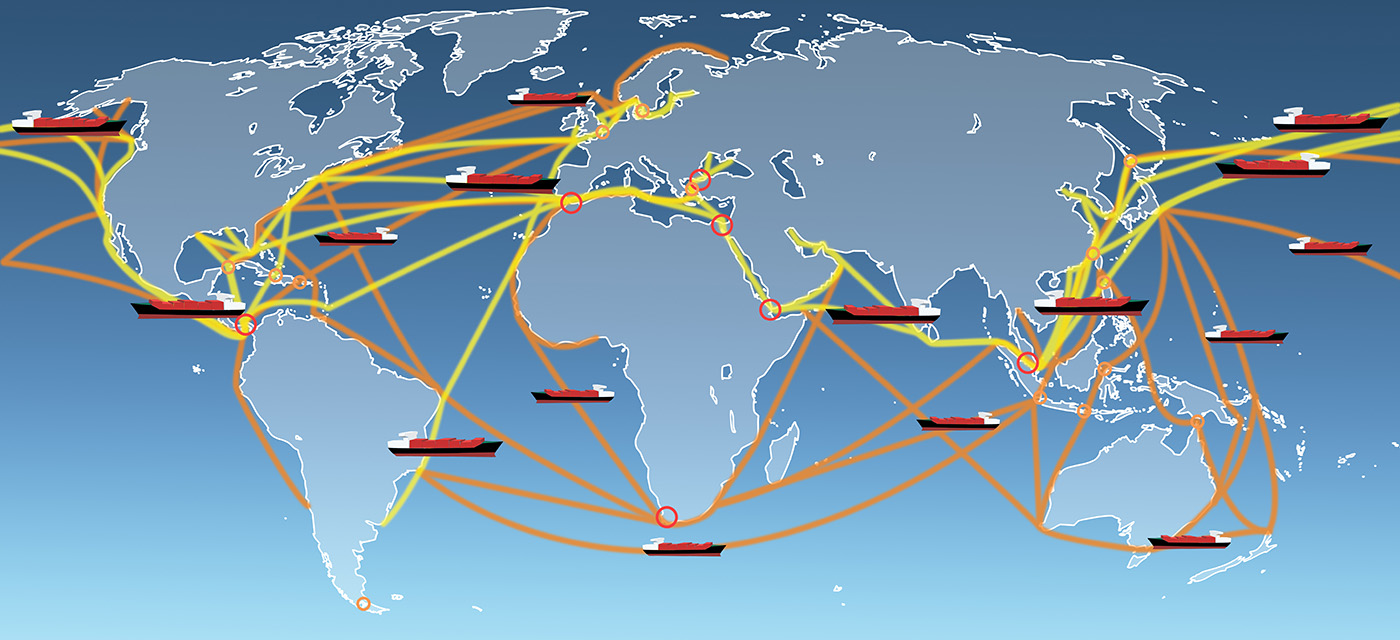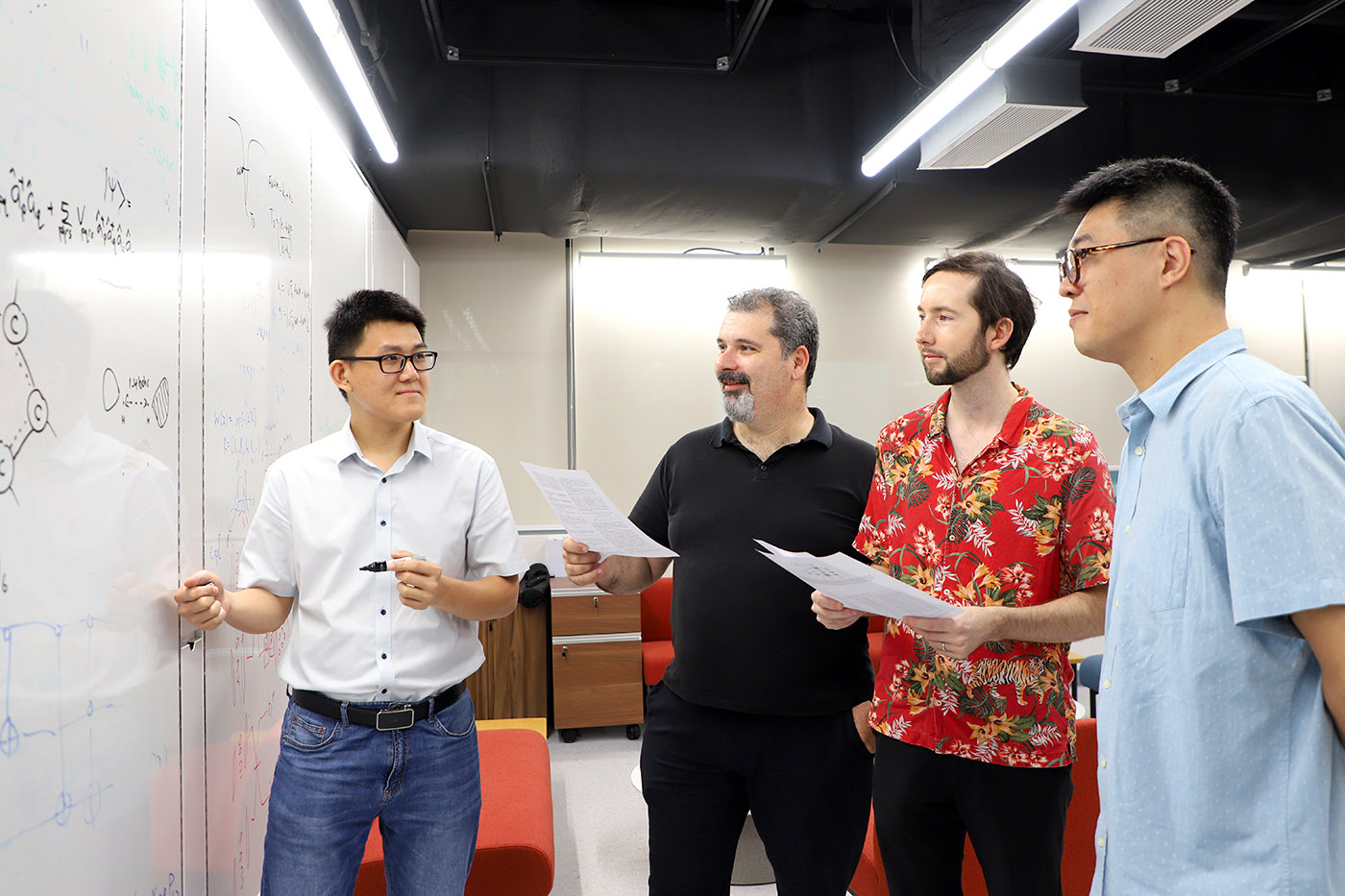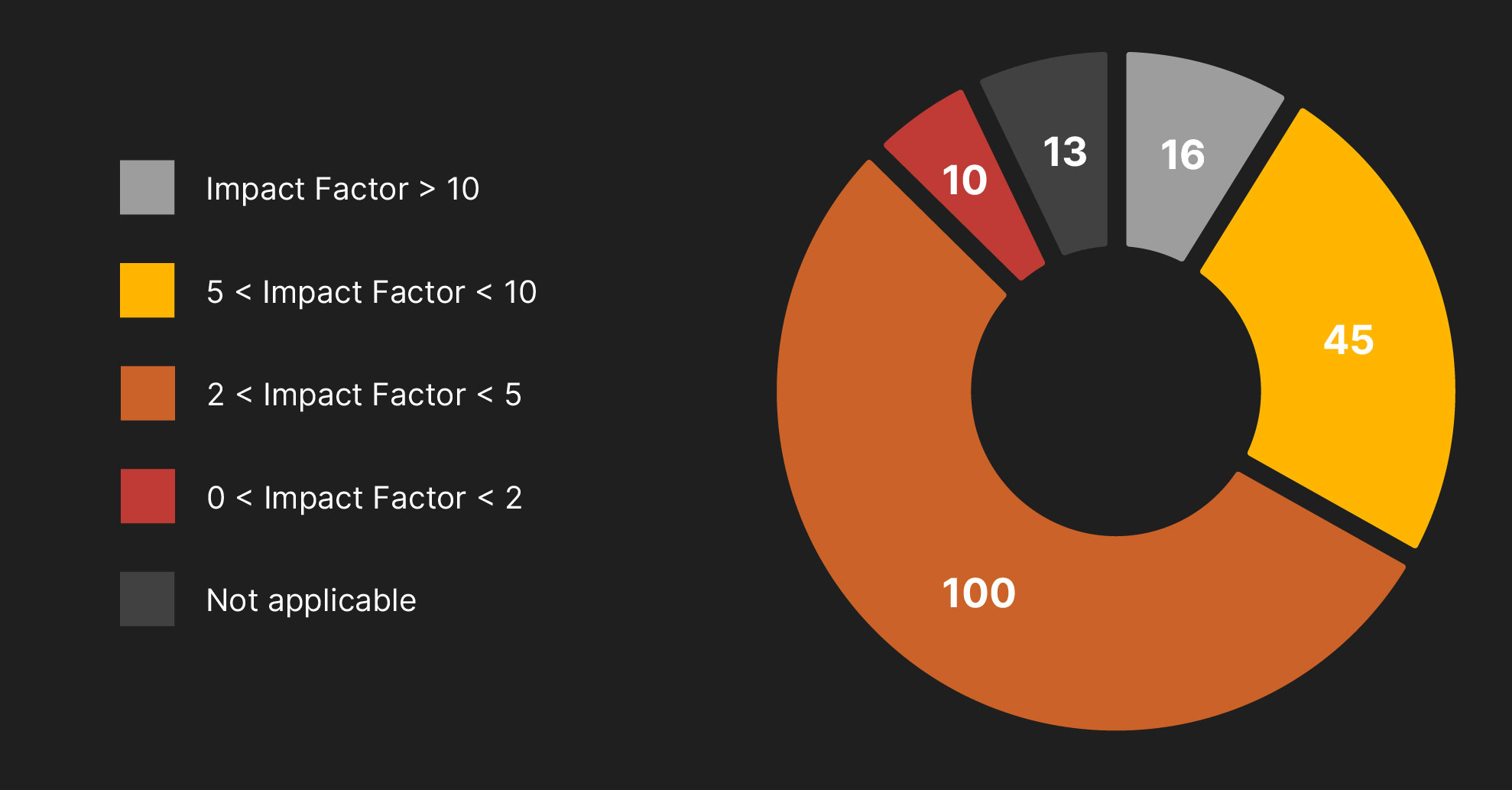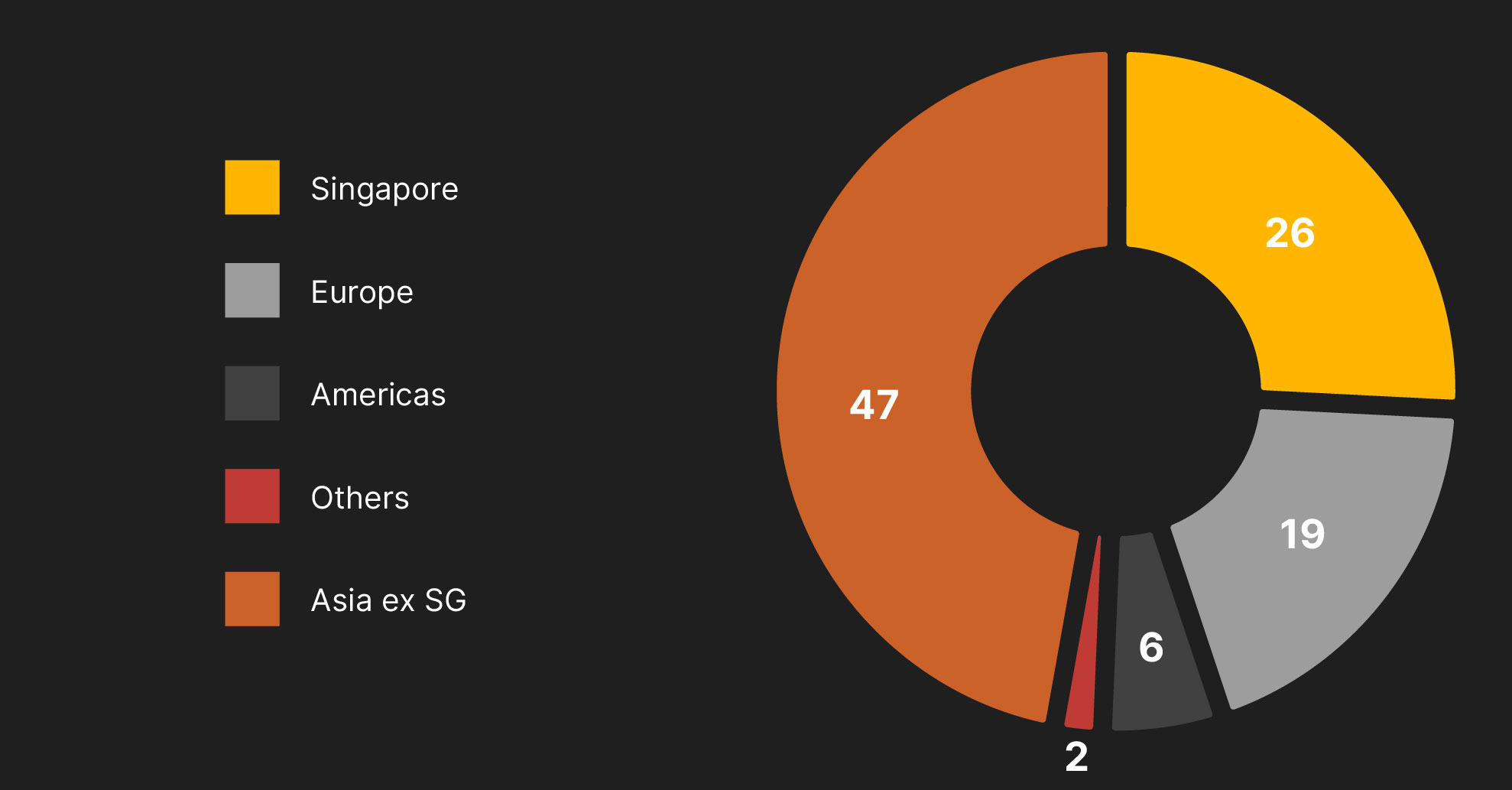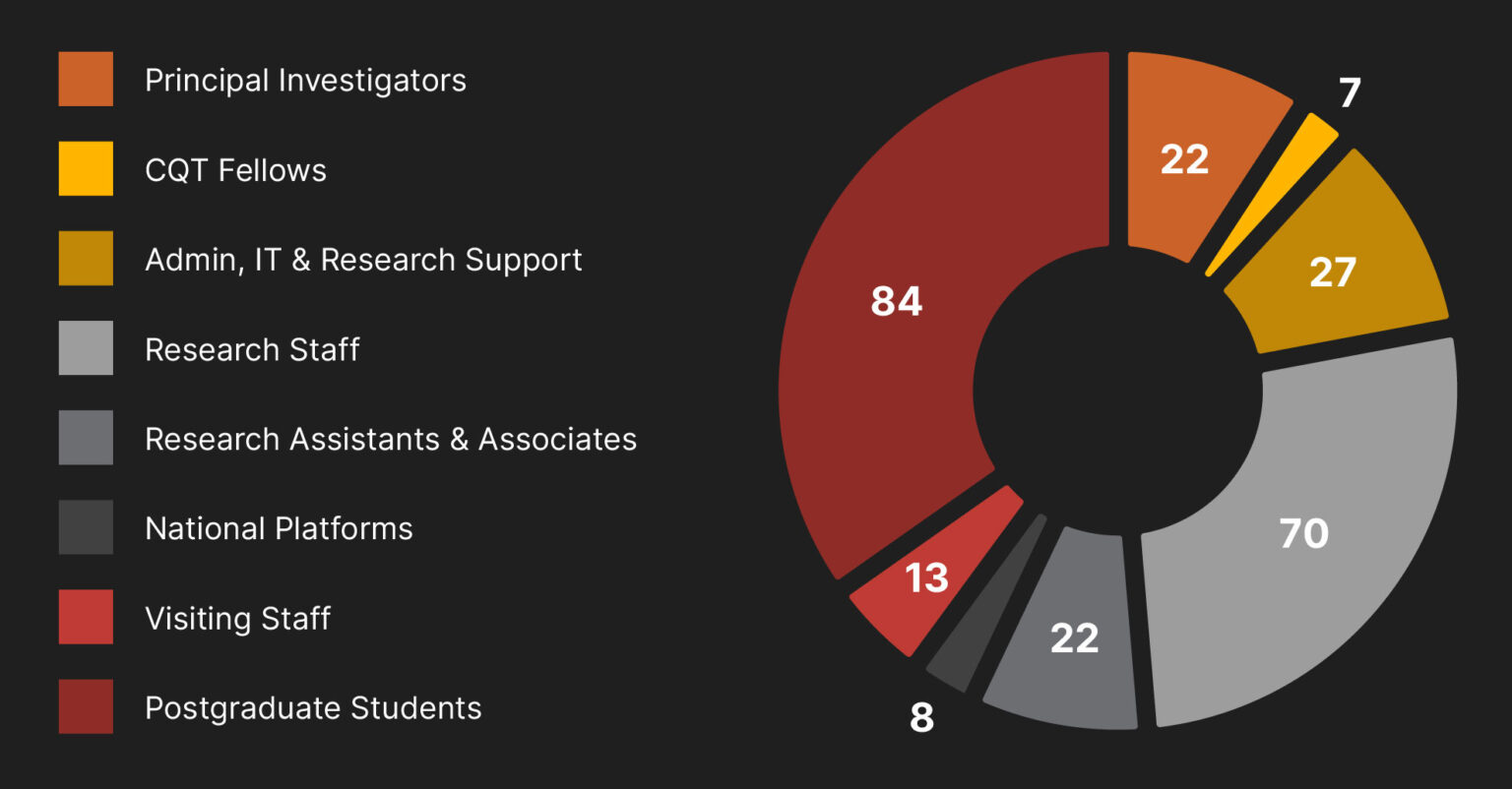Optimisation strategy assists quantum simulation of fluid dynamics
CQT researchers and their collaborator demonstrate strategy to enhance the performance of variational quantum algorithms
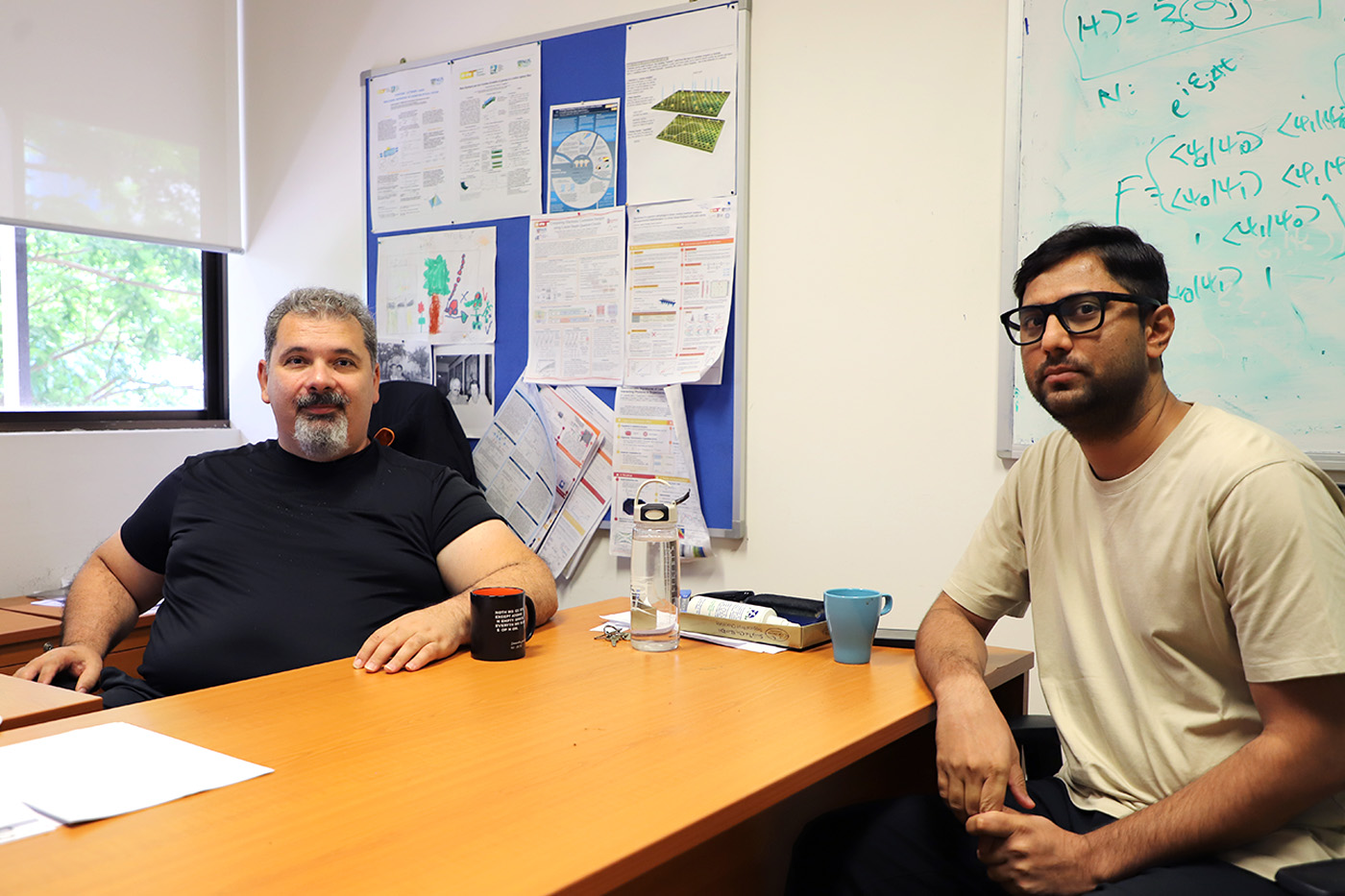
CQT’s Dimitris Angelakis (left) and Muhammad Umer (right) and their collaborator Eleftherios Mastorakis (not pictured) have proposed a problem-dependent optimisation strategy to improve the performance of variational quantum algorithms.
A team led by CQT’s Dimitris Angelakis has invented a new method to optimise variational quantum algorithms and have demonstrated its effectiveness for the important problem of simulating fluid flows. The researchers published their work in Quantum Science and Technology on 19 May 2025.
Modelling fluid dynamics, or how fluids flow, is important in industries from aerospace and automotive to energy and geophysics. Researchers are motivated to perform these calculations on quantum computers because solving the nonlinear differential equations that describe fluids is computationally intensive on classical computers.
Dimitris’s group has an ongoing collaboration with Dieter Jaksch’s group at the University of Hamburg, Germany, to investigate how computational fluid dynamics can be done with near-term quantum computers. In Dimitris’ new paper with CQT Research Fellow Muhammad Umer and collaborator Eleftherios Mastorakis, they devised an optimisation strategy for variational quantum algorithms (VQAs) and demonstrated its benefits using prototypical applications in fluid dynamics.
VQAs are a class of algorithm that can be implemented in current noisy quantum computers. “Our primary goal is to implement these algorithms as efficiently as possible on quantum hardware,” says Dimitris, who is a CQT Principal Investigator and a Visiting Research Associate Professor at the National University of Singapore. He also has a co-appointment as Professor at the Technical University of Crete, Greece.
The researchers found their approach outperformed the standard optimiser, known as the COBLYA algorithm. Their method could also be applied to VQAs from other fields including quantum dynamics, quantum chemistry and quantum finance.
Tailoring algorithm to problem
VQAs take a hybrid quantum-classical approach, with a classical computer acting to determine the parameters of the quantum circuit that prepares a quantum state, iterating through rounds of optimisation. In each round, the quantum state generated by the circuit is utilised to evaluate a cost function that encodes the objective of the problem. The classical computer then adjusts the circuit in the quantum computer, guiding it to better approximate solutions to the problem.
Conventionally, the optimisation process is left to operate like a black box. In their work, Dimitris and his team instead intervene to create a problem-dependent optimisation method. They first break down the quantum circuit into a weighted sum of distinct components, which in turn allows the cost function to be expressed as a sum of multiple terms, each corresponding to a component of the circuit.
Muhammad, who is first author of the publication, says, “The idea came from how we can write a single gate as a linear combination of unitary operators. We expanded this to the whole circuit and how we can break it down.”
By expressing the circuit and cost function in parts, the team could more easily evaluate the behaviour of the cost function across various parameter values, reaching an optimal solution more efficiently.
Fluid flow simulation
To measure the method’s impact, the researchers ran simulations of the VQA on classical hardware, comparing their optimisation technique to the COBLYA optimiser. They also compared the outputs to solutions calculated using classical algorithms.
The researchers did this for two use-cases. They looked at the one-dimensional viscous Burgers’ equation, which describes the behaviour of fluids in different regimes, and the nonlinear Schrödinger’s Equation, which describes phenomena including the propagation of light, and superfluidity and vortex generation in Bose-Einstein condensates.
They found that their optimisation technique outperformed the COBLYA optimiser on a number of metrics. For example, when calculating Burgers’ equation, their optimised VQA got closer to the classical solution, achieving a 98 to 99% fidelity compared to 80% from the COBLYA optimiser.
Their technique also required fewer iterations, in terms of the number of times calculations had to be sent to the quantum computer. When applied to the Burgers’ equation, the proposed technique converged significantly faster than COBYLA – both in the laminar regime, where fluid flow is smooth and orderly, and in the turbulent regime, where the flow becomes chaotic. Notably, COBYLA optimiser failed to reach the optimal values achievable by their method within a comparable number of iterations.
The group is now looking at how the optimisation process will work on real quantum hardware.
Related Stories

14 October 2024
Algorithm settles financial transactions with fewer qubits
The group of Principal Investigator Dimitris Angelakis tests its quantum algorithm on financial transaction data from Singapore Exchange
